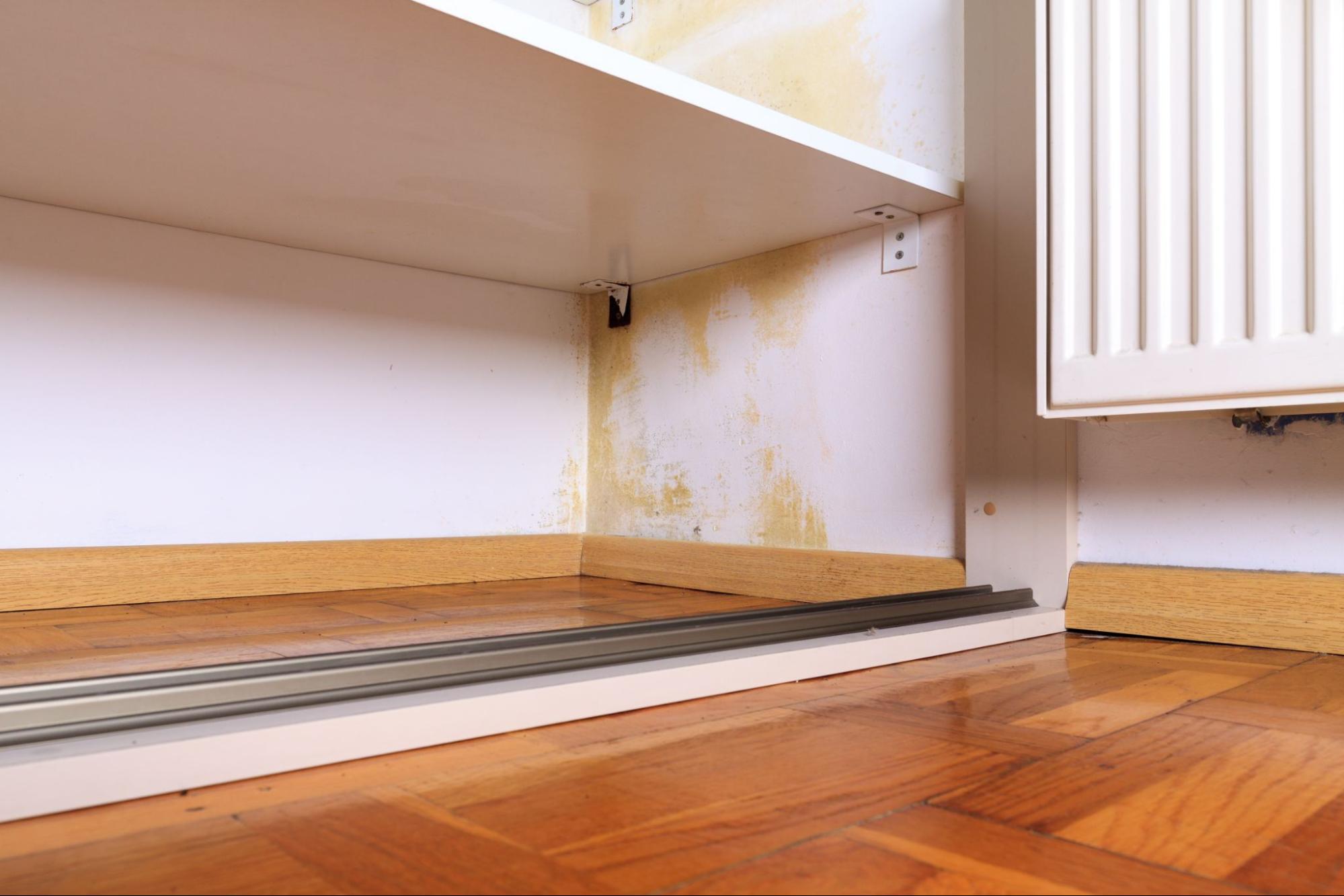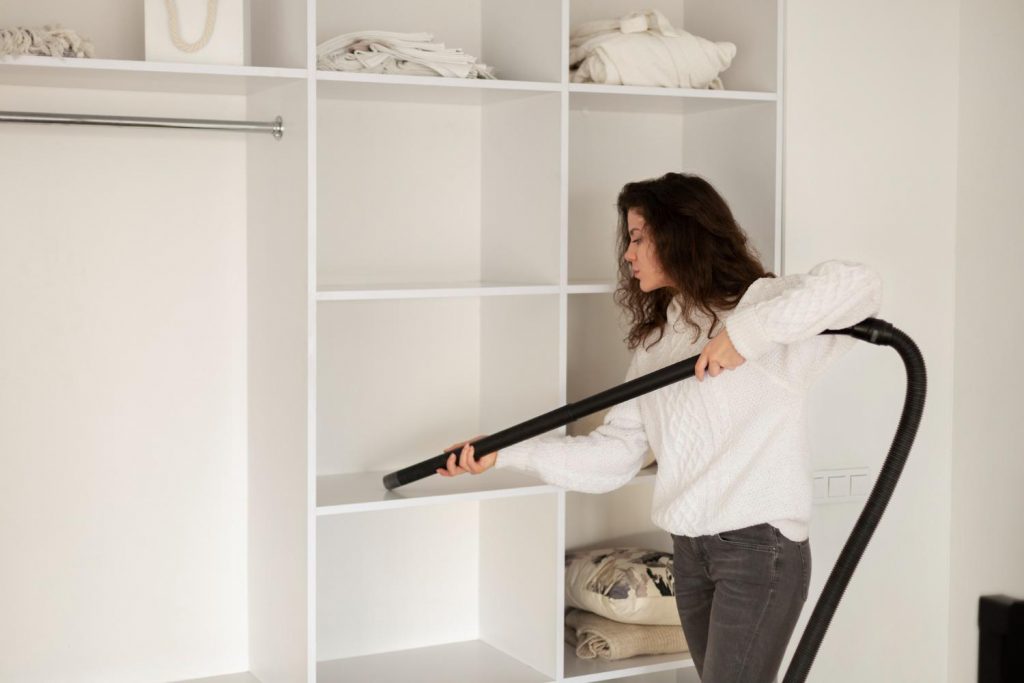
Eugene Chai
Opening your wardrobe to find a musty odour and visible mould growth is every Singaporean homeowner’s nightmare. Mould and mildew not only damage your clothes and belongings but can also pose health risks. Fortunately, with a proactive approach and a few simple preventative measures, you can create a wardrobe environment that discourages mould growth and keeps your clothes fresh and clean.
This guide will walk you through understanding mould and mildew, identifying the signs, pinpointing the causes, and most importantly, how to prevent and free your closet from getting these unwelcome guests.
What Are Mould and Mildew, and Why Are They a Problem?
Mould and mildew are types of fungi that thrive in damp, dark, and poorly ventilated environments. They reproduce by releasing microscopic spores into the air, which can land on surfaces and begin to grow when conditions are right. These fungi feed on organic materials, including fabrics, wood, and even dust, making your wardrobe an ideal breeding ground if not properly managed.
The problem with mould and mildew goes beyond just the unpleasant smell and unsightly appearance. Prolonged exposure to mould spores can trigger allergic reactions, respiratory problems, and other health issues, especially for those with sensitivities. Moreover, mould can weaken and stain fabrics, leading to irreversible damage to your beloved clothes and accessories.
Signs of Mould and Mildew
Early detection is absolutely crucial in preventing a full-blown mould infestation in your wardrobe. The sooner you identify the problem, the easier it will be to address and the less damage will occur. Here are some telltale signs to watch out for, paying close attention to any changes in your wardrobe’s environment or the condition of your belongings:
- A musty or earthy odour: This is often the first and most obvious sign. Mould and mildew produce volatile organic compounds (VOCs) that have a distinct, unpleasant smell. If your wardrobe has a persistent musty or earthy odour, even after airing it out, mould growth is likely.
- Visible spots or discolouration on clothes or wardrobe surfaces: Mould and mildew can appear as small, fuzzy spots or larger patches of discolouration. The colour can vary, including white, grey, green, black, or even brown. Check your clothes, especially those stored for longer periods, and the inside surfaces of your wardrobe, including shelves, walls, and the back panel.
- A damp or humid feeling inside the wardrobe: Mould thrives in moist environments. If the air inside your wardrobe feels consistently damp or humid, it’s a red flag. This can be particularly noticeable if you live in a humid climate or if your wardrobe is located in a room with poor ventilation.
- Changes in fabric texture: If your clothes feel unusually damp, sticky, or have a rough texture, it could be a sign of mould growth.
Causes of Mould and Mildew on Your Clothes
Several factors can contribute to mould and mildew growth in your wardrobe. Understanding these causes is key to implementing effective prevention strategies:
- High humidity levels: Elevated humidity is the primary driver of mould and mildew growth. When the air holds a lot of moisture, it can condense on surfaces, creating a damp environment that fungi love.
- Poor ventilation: Lack of airflow prevents moisture from evaporating, allowing it to linger and create a damp environment. Confined spaces like wardrobes, especially when packed full of clothes, are particularly vulnerable.
- Storing damp clothes: Putting away clothes that aren’t completely dry, even slightly damp, is a surefire way to encourage mould growth. This can happen if clothes are not dried properly after washing or if they’re stored after being worn in sweaty conditions.
- Spills or leaks: Any water spills inside the wardrobe or leaks from the roof or walls can introduce excessive moisture, creating a breeding ground for mould.
- Dust and dirt accumulation: Dust and dirt can provide nutrients for mould to grow. Regularly cleaning your wardrobe helps remove these potential food sources.
Prevent Mould from Growing in Your Wardrobe
Preventing mould growth is significantly easier and more effective than dealing with a full-blown infestation. Here are some effective prevention tips to create an inhospitable environment for mould:
- Control humidity levels: Maintain a relative humidity level below 50% in your wardrobe. Use a dehumidifier, especially during humid seasons, to remove excess moisture from the air. You can also use moisture-absorbing products like silica gel packs or charcoal bags inside the wardrobe.
- Ensure proper ventilation: Good airflow is essential. Keep wardrobe doors slightly ajar whenever possible to allow air to circulate. Consider using a small fan to improve ventilation, especially in humid climates. Avoid overcrowding your wardrobe, as this can restrict airflow.
- Store clothes properly: Always ensure clothes are completely dry before storing them. Avoid stuffing clothes too tightly, as this restricts airflow. Use breathable storage containers and avoid plastic bags for long-term storage.
- Address leaks and spills promptly: Fix any leaks in the roof or walls immediately. Clean up any spills inside the wardrobe thoroughly and ensure the area is completely dry.
- Clean your wardrobe regularly: Regularly dust and vacuum your wardrobe to remove dust, dirt, and any potential mould spores. Wipe down surfaces with a damp cloth and a mild cleaning solution.
How to Remove Mould and Mildew From Your Clothes
Before you throw out your mouldy clothes, know that there are a few ways to salvage your favourite garments. If you discover mould or mildew on your clothes, it’s crucial to act quickly to remove it and prevent further damage to the fabric. Mould can weaken fibres and leave permanent stains if left untreated. Here’s a step-by-step guide to effectively remove mould and mildew from your clothes:
- Take the clothes outside to prevent spreading mould spores inside your home.
- Brush off loose mould with a soft brush.
- Wash the clothes with hot water and enzyme laundry detergent.
- Dry clothes thoroughly. If possible, dry them in direct sunlight, as sunlight has natural antifungal properties.
- Consider using vinegar or bleach. Add one cup of white vinegar to the washing machine during the rinse cycle. Vinegar is a natural antifungal agent and can help kill any remaining mould spores. Alternatively, if the fabric is bleach-safe, you can add a small amount of bleach to the wash cycle. However, always test bleach on a hidden area of the garment first to ensure it doesn’t cause discolouration.
How to Remove Mould and Mildew From Your Wardrobe Surfaces

Mould can also grow on the surfaces of your wardrobe, including the walls, shelves, and floor. Cleaning these surfaces is essential to prevent mould spores from spreading and re-infecting your clothes. Here’s how to effectively clean mould and mildew from your wardrobe surfaces:
- Open windows and doors to increase airflow and dry out the wardrobe.
- Protect yourself from mould spores by wearing gloves, a mask, and eye protection.
- Prepare your cleaning solution. You can consider using equal parts white vinegar and water, one part bleach and ten parts water, or commercial mould cleaner.
- Spray the cleaning solution onto the mouldy surfaces and let it sit for a few minutes. Then, scrub the surfaces with a brush or sponge. Wipe away the cleaning solution with a clean, damp cloth.
- After cleaning, dry the surfaces thoroughly with a clean cloth or allow them to air dry.
A Mould-Free Wardrobe: A Breath of Fresh Air
By understanding the causes, implementing preventative measures, and knowing how to tackle mould and mildew effectively, you can create a wardrobe that’s not only organised and stylish but also healthy and free from harmful fungi. Remember, a little vigilance goes a long way in ensuring your clothes and your well-being are protected.
And for those times when you need a helping hand with your laundry or other cleaning services, don’t hesitate to seek professional assistance. Whether it’s laundry services or cleaning services, experts can provide the care and attention your clothes and home deserve. With the right approach, you can enjoy a fresh, clean, and mould-free environment for years to come.